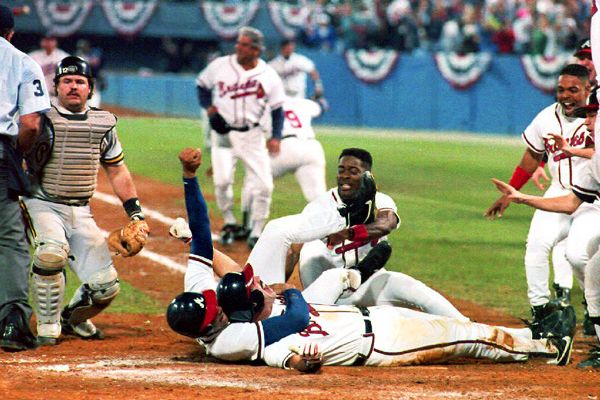Football factories and decanal tenures
 Gregg Easterbrook, brother of the Honorable Frank Easterbrook, is my favorite football analyst. His breakdown of this year's BCS debacle is a must-read for any serious football fan. This analysis offers many lessons for MoneyLaw; by and by, I hope to connect Easterbrook's evaluation of college football with law school administration and the sabermetric concept of value over replacement player.
Gregg Easterbrook, brother of the Honorable Frank Easterbrook, is my favorite football analyst. His breakdown of this year's BCS debacle is a must-read for any serious football fan. This analysis offers many lessons for MoneyLaw; by and by, I hope to connect Easterbrook's evaluation of college football with law school administration and the sabermetric concept of value over replacement player.For the time being, though, I wish to draw attention to a single paragraph in Gregg Easterbrook's latest missive:
[F]ootball-factory schools in Division I-A hold such incredible advantages in recruiting, in cupcake-opponent scheduling and in playing more games at home than on the road that an orangutan could coach a Division I-A school to bowl eligibility. Almost every football-factory season ends in a bowl bid, and thus the typical football season outcome at a big school is officially characterized as a success. Two-thirds of NFL teams do not qualify for the postseason, and thus the typical season outcome in the pros is failure. That's why there are far more long-term coaching dynasties in college than in the NFL. It is simply easier to win games at a football-factory college than in the pros, meaning more college coaches with career winning records and longtime tenures.
 Here is a clear instance in which empirical research can answer questions that people care about. First, we need to measure the lengths of football coaches' tenures in three categories: (1) the National Football League, (2) college football factories (essentially, BCS conference schools plus Notre Dame, the delightfully pathetic performance of this season's Irish notwithstanding), and (3) other Division I-A college football programs. If Easterbrook is right, coaches in category 2 should experience less turnover than their counterparts in the NFL and the non-BCS corners of Division I-A college football.
Here is a clear instance in which empirical research can answer questions that people care about. First, we need to measure the lengths of football coaches' tenures in three categories: (1) the National Football League, (2) college football factories (essentially, BCS conference schools plus Notre Dame, the delightfully pathetic performance of this season's Irish notwithstanding), and (3) other Division I-A college football programs. If Easterbrook is right, coaches in category 2 should experience less turnover than their counterparts in the NFL and the non-BCS corners of Division I-A college football.

Durable dean, durable coach
Law schools that routinely appear in or near the top tenth of the U.S. News rankings enjoy significant managerial advantages relative to the rest of American legal academia.One way to put that proposition to the test is to compare the longevity of deans at elite law schools with the tenures of their counterparts at other schools. You can control for "promotions," defined as decanal moves to higher-ranked schools. You can also control for industry-wide variations in decanal tenure over time; perhaps we are living in a period of quicker triggers across all institutions. When the chips are down, though, I suspect that the managerial advantages at wealthy, elite institutions are indeed considerable, and these advantages are in fact reflected in longer, more comfortable decanal terms in office.













1 Comments:
Since MoneyLaw deals with pay for performance and some readers, at least Jim Chen, are football fans:
The clever foks at USA Today
have figured out the cost per football win for the last season - in terms of coaches salaries.
My beloved Gophers are at least number one in that aspect of football.
Minnesota cost/win = $1,000,000
Why we have even beaten Duke - they come in third at a piddly 544K. Alabama edges out Duke for the number two spot at 584K.
Louisville, by the way, is in the middle of the pack at 236K.
In medio stat virtu?
The numbers are great fun and somewhat surprising.
Ciao,
Bonzo
Post a Comment
<< Home